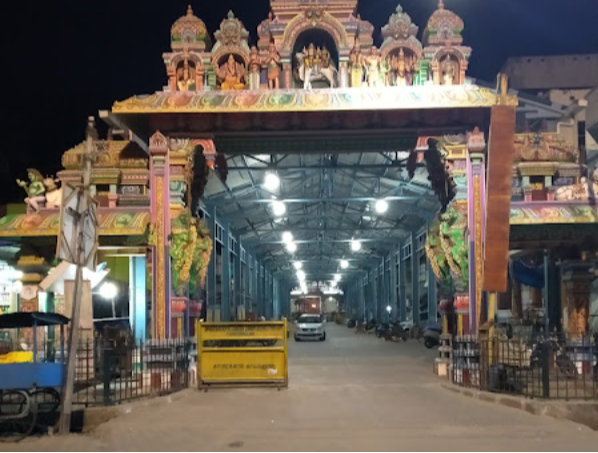Origin/History :-
The Annan Perumal Temple, revered in the Nalayira Divya Prabandham, a 7th–9th century Vaishnava canon, is praised by Perialvar, Thirumalisai Alvar, and Thirumangai Alvar. The temple is also mentioned in various 18th and 19th-century publications, including 108 Tirupati Antati by Divya Kavi Pillai Perumal Aiyangar. The ruling deity was worshipped by King Svetharaju of the Ikshvaku dynasty. Kumudhavalli Nachiyar, a native of this place, married Thirumangai Alvar, also known as Kaliyan or Kalikanti, a military commander and chieftain who became a saint. Villagers would welcome Thirumangai Alvar with coconuts when he visited and bid him farewell upon his departure. The temple is believed to have been built by the early Cholas and maintained by the later Cholas, with the mandapam being constructed during the Vijayanagara or Nayak period.
Puranic Significance :-
Once, King Swethan, son of Thundu Maran of the Surya dynasty, fearing an early death, sought the help of Maruthuva Maharishi, the son of Lord Surya. The sage instructed Swethan to chant the Mrityunjaya Mantra while sitting under a Vilvam tree on the south bank of the Pushkarani. Lord Narayanan appeared before the king and blessed him with a long life. This sacred site, known as South Tirupathi, is considered equivalent to Tirumala Tirupati, where offerings made to Thiruvenkadamudayan can also be offered here. At Thiruvinnagar, Lord Oppiliappan, along with Goddess Bhoodevi, represents an equivalent form of Lord Varahaswamy and Bhoodevi, akin to Tirumala Tirupati, and as Lord Srinivasa and Padmavathi, as seen in Thiruvellakulam. Lord Srinivasa here bears the qualities of Lord Rama and Lord Krishna, symbolising Lord Rama as the elder brother (Annan) of Lord Krishna, thus earning the name Annan.
Having saved King Swethan from his fear of death, Lord Narayanan revealed himself as Varadharajan. As he embodies all the yugas, the temple’s Vimaanam reflects this divine act with the Thathuva Yodhaga Vimanam. The deity here is honoured with the names "Annan" and "Kannan," symbolising elder and younger brothers, respectively, which is why the temple is called Annan Kovil. Additionally, the deity is referred to as Narayanan, linking him to both Sri Rama and Venkata Krishna, who were in search of their consorts, Sita Devi and Goddess Padmavathi, respectively.
The name "Vellakulam" comes from the combination of "Vellam" (flood) and "kulam" (pond), both of which signify water. This name parallels Annan Kovil, and also reflects the association with Lord Rama, Balarama, and Aadhi Vishnu, who are all of white colour, while Lord Krishna is blue, reminiscent of the colour of water. Thus, the name Vellakulam might also be interpreted as related to the white colour ("Vellai") and its symbolic connection to water.
